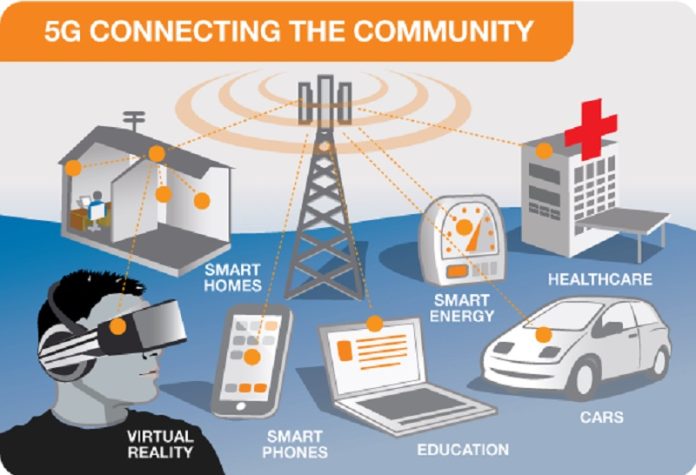By Modupe Gbadeyanka
A new study published by a management consulting firm, Analysys Mason, for Ericsson has highlighted the potential economic benefits of 5G in emerging markets.
The comprehensive research shed light on 15 countries across Asia, Africa and Latin America, looking at how governments, regulators and policymakers can play a key role in using the latest technology to improve their gross domestic product (GDP). and Internet penetration.
The study also looked at how 5G can affect the lives of consumers and the environment in these countries, which are Bangladesh, Brazil, Chile, Colombia, Egypt, India, Indonesia, Malaysia, Mexico, Morocco, Nigeria, Pakistan, South Africa, Thailand. . and Turkey.
It was found that all of these nations could benefit from GDP growth of between 0.3 and 0.46 percent through 2035, with an estimated benefit-cost ratio of three to seven times.
The report, called Future Value of Mobile in Emerging Markets, examined the impact of multiple 5G spectrum deployment options to enable enhanced mobile broadband and fixed wireless access (FWA) across utility, rural, logistics, industrial and consumer, and encompasses various businesses. case options, including verticals.
The detailed methodology included the use of national government statistics and reports, knowledge of the Ericsson network and innovative mapping techniques, based on the distribution of population density and existing national infrastructure, such as road and rail networks and agriculture, to create a cost-benefit model in the different implementations. options
Deployment options were based on the initial assumption of having a basic 5G deployment added to existing mobile radio network sites. Additional options explore the additional benefits of adding low-band 5G spectrum coverage beyond the baseline (providing broader geographic coverage at the lower end of 5G capabilities and accommodating agricultural or logistics deployments) or medium band 5G spectrum coverage, which provides a smaller geographical coverage per site, but with greater capacity and speed, suitable for manufacturing, automation, industry and advanced services.
Extended mid-band 5G coverage was identified as the key success factor, with the potential to generate around 80% of the economic benefits. The benefits of the Smart Industry and Smart Rural clusters account for 85 to 90 percent of the total economic benefits in each emerging market.
Agriculture was an important sector in all 15 countries, accounting for up to 10 percent of GDP in some markets. The report estimates that improved rural 5G coverage could deliver up to a 1.8 percent increase in long-term GDP from agriculture. 5G will also promote sustainable farming methods, increase efficiency, and reduce farm waste.
“This Analysys Mason Future Value of Mobile in Emerging Markets report provides a detailed breakdown, based on extensive investigation of realistic and achievable scenarios in each of 15 countries, of the potential economic, social, environmental and national benefits of 5G in these markets.
“With the backing of governments, regulators and legislators, each of these 15 countries and their citizens will benefit significantly from 5G connectivity.
“In addition to the economic benefits, 5G can also reduce climate impact, increase social inclusion, well-being and address the digital divide in areas where the availability of fixed infrastructure is scarce,” said Andrew Lloyd, Head of Government and Policy Advocacy. from Ericsson.
For her part, Analysys Mason partner Ms Janette Stewart said: “The study highlights the benefits of having adequate spectrum available for 5G deployment, both for geographic coverage, for which low bands are very such as in the 3.5 GHz band where most high-capacity 5G deployments are already taking place in other markets.”







